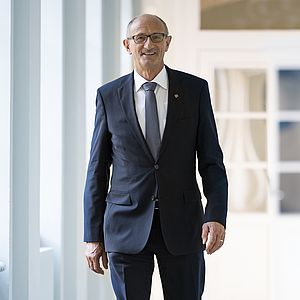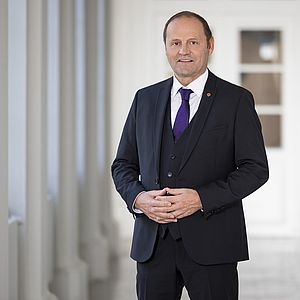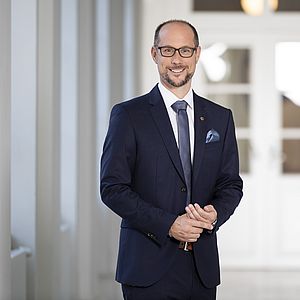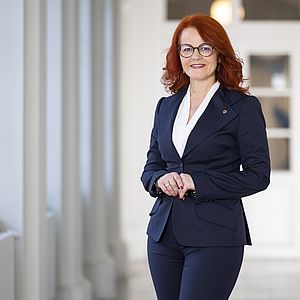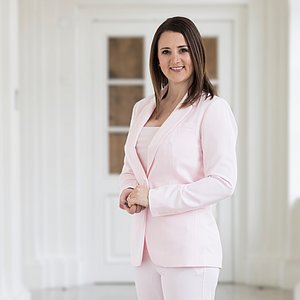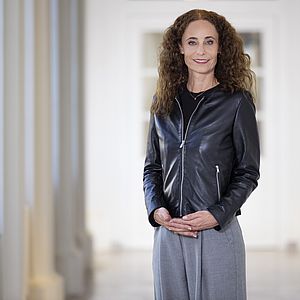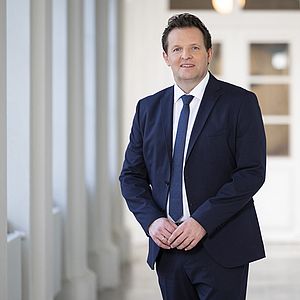Walter and Ewald Guth
This is the story of Walter Guth. He and his brother Ewald Guth were the Gauhaus architects. A prestigious large-scale project, it brought them little in the way of renown.
Walter Guth, the elder of the two brothers, was born in 1904 in what is now the Czech Republic and grew up in Tyrol. He studied at the Vienna Academy under Peter Behrens and the Tyrolean Clemens Holzmeister. Ewald was also an architect and started working in his brother’s office in Innsbruck in 1931. Walther applied for membership of the NSDAP in 1933.
When the Gauhaus project was announced, there were only 16 registered architects in Innsbruck. Walter Guth was one of them. Under the Nazis, only members of the Reich Chamber of Culture were permitted to work as architects. References were required for participation in the architectural design competition for the Gauhaus. Guth Architects were relatively new and their references related mainly to refurbishment and interior design projects: the famous Hotel-Cafe-München, modifications to the Bürgerbräu brewery building, and the interior of the Breinössl inn. Out of a total of eight entries, the Guth brothers won the competition with a design resembling a “soaring eagle”. Gauleiter Hofer insisted on certain modifications, and responsibility for the planning was then transferred to the Building Department. The name Guth nevertheless continued to be associated with the Landhaus.
By the time the Gauhaus was ready, Ewald Guth had already been drafted into the Wehrmacht. He served as a mountain infantryman in Poland and with the Naval Construction Office in Brittany. His brother Walter entered National Socialist service in 1941 and was responsible for the planning and site management of the high alpine molybdenum mine in Innervals. He was assigned a contingent of forced labourers.
The brothers were not readmitted to the Chamber of Architects until 1949. They were advised against entering architectural design competitions. Neither submitted any further bids in public tender procedures but worked for private and ecclesiastical clients.

